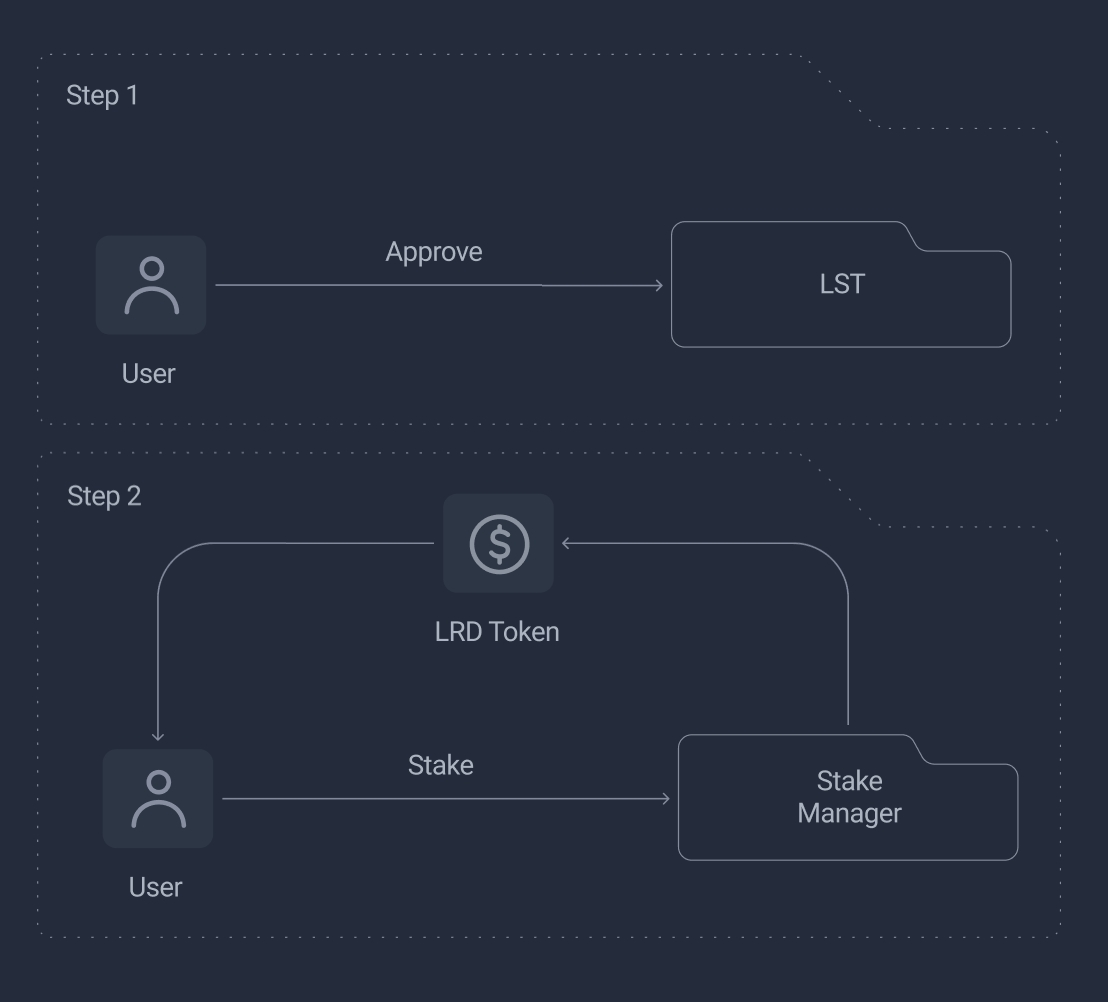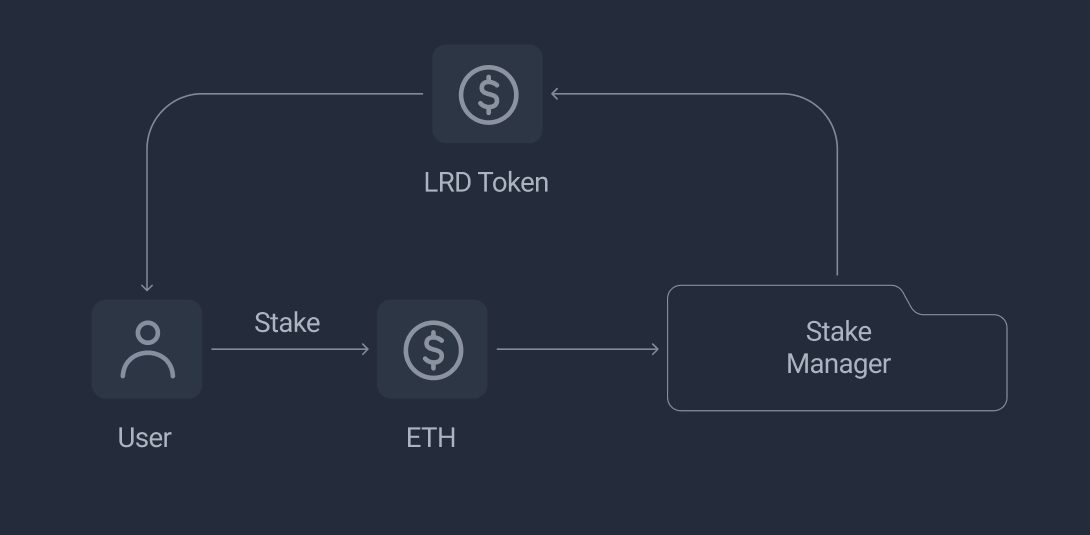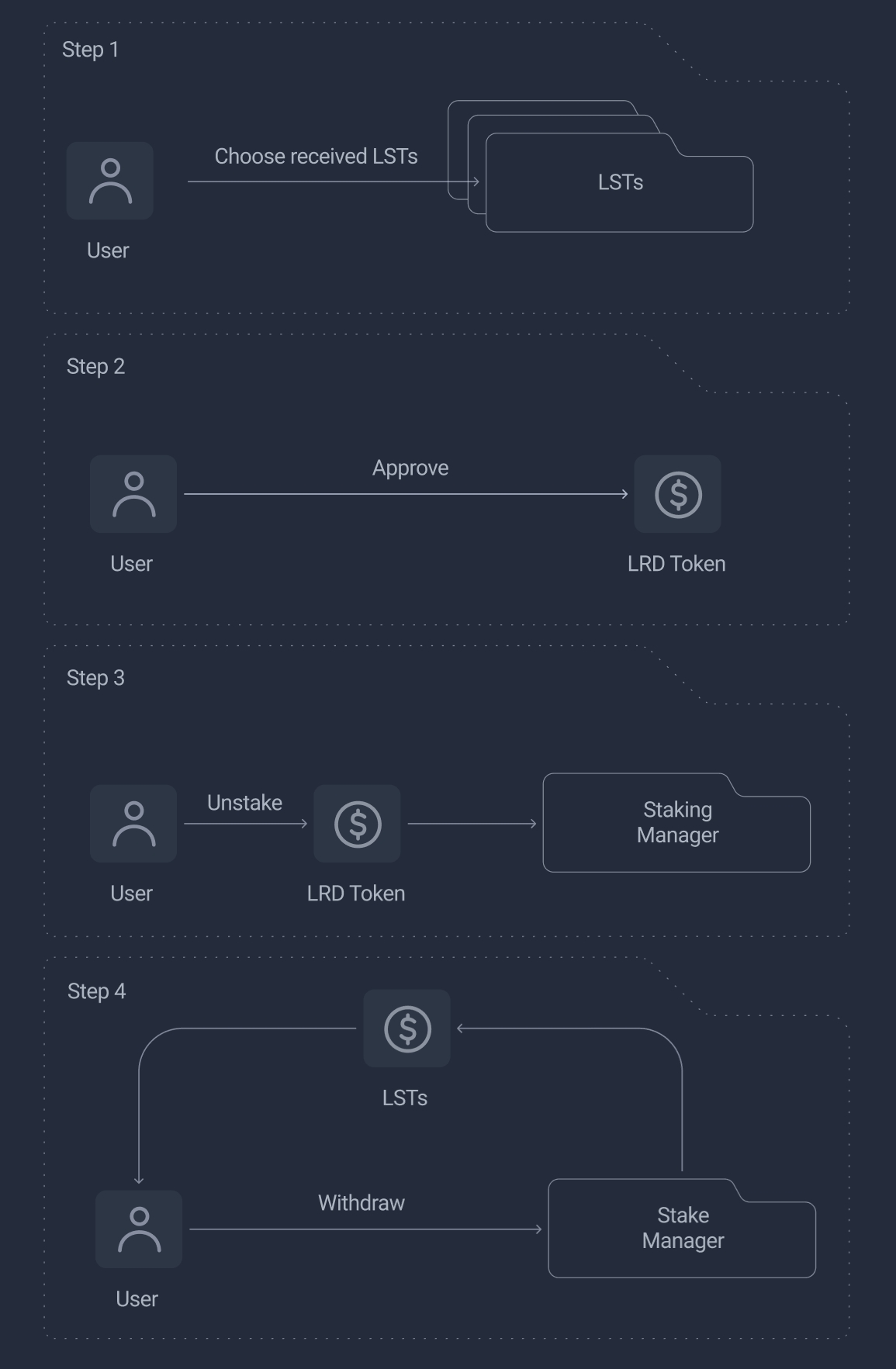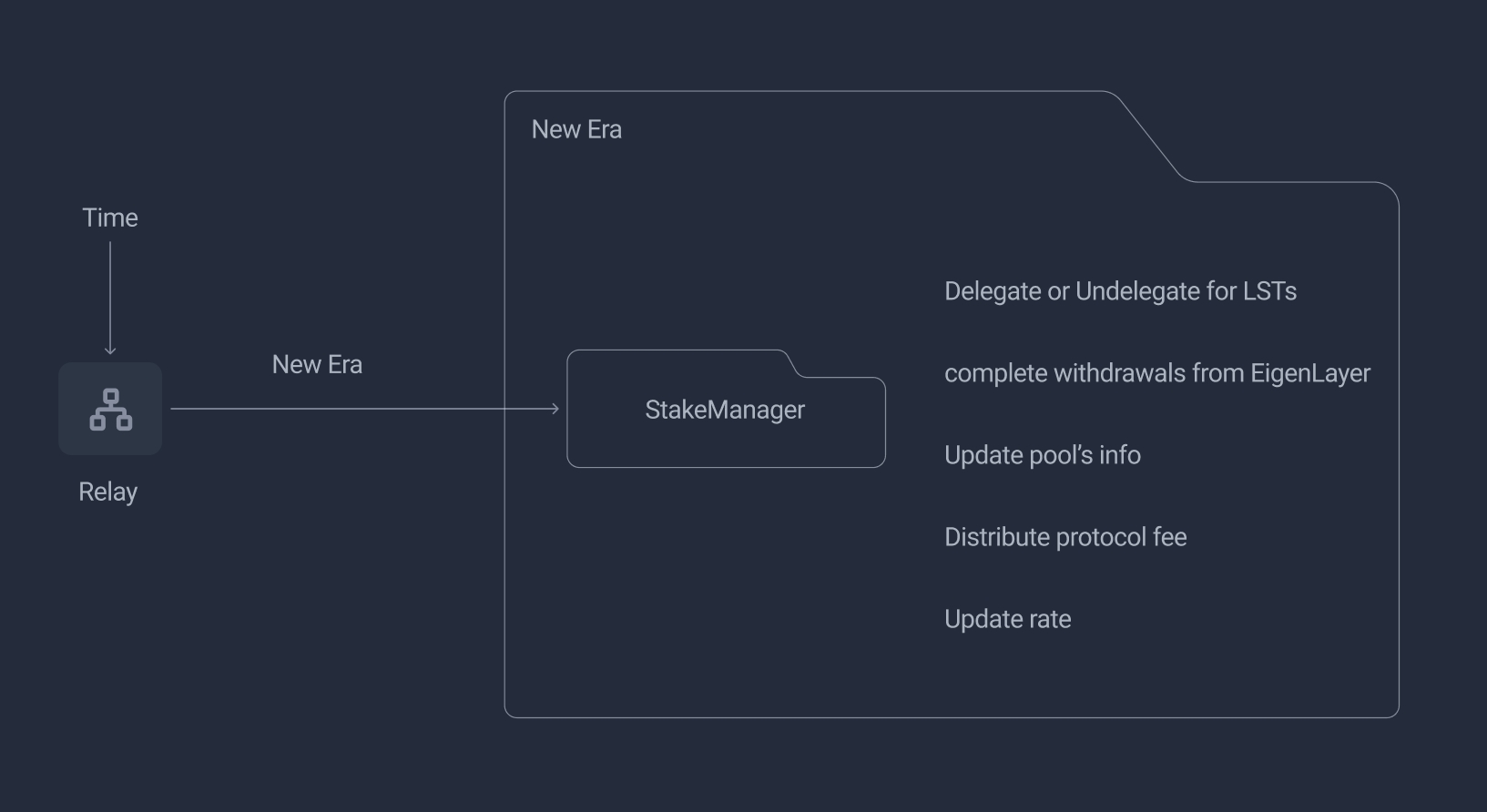LRT Stack
StaFi LRT Stack is a simple, scalable and open-source development stack that powers EigenLayer LRT providers. Developers can launch a LRT based on it.
Smart contracts
- LrdToken: an ERC-20 compatible derived token. Users receive this token as a receipt for staking LST. And it will be burnt after unstaking.
- StakePool: do delegation stuff with EigenLayer and will be bound to the chosen operator.
- StakeManager: keep track of pools' states, interact with restakers, and do other routine works

Stakers flows
Stake Flow
Users can stake ETH directly or any LSTs. For ETH stakers, they should call StakeManager.stakeETH with the amount of ETH they are willing to stake. For LST stakers, they should call StakeManager.stake with LST token and the amount of the token. They will receive LRT in return no matter which LST or ETH they deposited.
- Scenario 1: Staking LST

- Scenario 2: Staking ETH

Unstake & Withdraw Flow
Any LRT holders are valid users, and can unstake their tokens in exchange for LSTs.
- Firstly, choose which pool supported LSTs they are willing to receive.
- Secondly, approve StakeManager to spend their LRT tokens.
- Thirdly, call StakeManager.unstake method with selected LSTs.
- Lastly, call StakeManager.withdraw to claim their LSTs after unbonding period.

Relay Service
Due to the limitation of smart contract, it could not launch an execution. So StaFi LRT Stack introduces Relay service. It will trigger StakeManager, at a certain interval, to collect and calculate users' reward, distribute it to the project and users.

 StaFi LSD Stack
StaFi LSD Stack